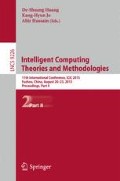Abstract
The success of machine learning algorithms generally depends on effective features. Prediction of molecular substructure based on mass spectral data is try to extract more useful information or feature expression. In this paper, deep learning (DBN) was used to extract mass spectral features automatically. A large dataset consisting 11 molecular substructure is extracted from NIST mass spectral library. The experimental results show that deep learning (DBN) achieve best classification performance in 11 molecular substructure contrasting traditional classification methods.
Access this chapter
Tax calculation will be finalised at checkout
Purchases are for personal use only
References
Gray, N.A.: Computer-Assisted Structure Elucidation. Wiley, New York (1986)
Varmuza, K., Werther, W.: Mass spectral classifiers for supporting systematic structure elucidation. J. Chem. Inf. Comput. Sci. 36(2), 323–333 (1996)
Cynkar, W., et al.: Classification of tempranillo wines according to geographic origin: combination of mass spectrometry based electronic nose and chemometrics. Anal. Chim. Acta 660(1), 227–231 (2010)
Werther, W., et al.: Evaluation of mass spectra from organic compounds assumed to be present in cometary grains. Exploratory data analysis. J. Chemom. 16(2), 99–110 (2002)
Yoshida, H., et al.: Feature selection by genetic algorithms for mass spectral classifiers. Anal. Chim. Acta 446(1), 483–492 (2001)
Yap, C.W.: PaDEL-descriptor: an open source software to calculate molecular descriptors and fingerprints. J. Comput. Chem. 32(7), 1466–1474 (2011)
Boger, Z.: Selection of quasi-optimal inputs in chemometrics modeling by artificial neural network analysis. Anal. Chim. Acta 490(1), 31–40 (2003)
Lee, H., et al.: Unsupervised feature learning for audio classification using convolutional deep belief networks. Adv. Neural Inf. Process. Syst. 22, 1096–1104 (2009)
Erhan, D., et al.: Why does unsupervised pre-training help deep learning? J. Mach. Learn. Res. 11, 625–660 (2010)
Bengio, Y., Aaron C.C., Pascal, V.: Unsupervised feature learning and deep learning: a review and new perspectives. CoRR, abs/1206.5538 1 (2012)
Ngiam, J., et al.: On optimization methods for deep learning. In: Proceedings of the 28th International Conference on Machine Learning (ICML-11) (2011)
Ranzato, M., et al.: Unsupervised learning of invariant feature hierarchies with applications to object recognition. In: IEEE Conference on Computer Vision and Pattern Recognition, CVPR 2007 (2007)
Freund, Y.:Boosting a weak learning algorithm by majority. In: COLT (1997)
Breiman, L.: Bagging predictors. Mach. Learn. 24(2), 123–140 (1996)
Acknowledgments
This work was supported by National Natural Science Foundation of China under grant nos. 61271098, 61472282, 61300058 and 61032007, and Provincial Natural Science Research Program of Higher Education Institutions of Anhui Province under grant no. KJ2012A005.
Author information
Authors and Affiliations
Corresponding author
Editor information
Editors and Affiliations
Rights and permissions
Copyright information
© 2015 Springer International Publishing Switzerland
About this paper
Cite this paper
Zhang, ZS., Cao, LL., Zhang, J., Chen, P., Zheng, Ch. (2015). Prediction of Molecular Substructure Using Mass Spectral Data Based on Deep Learning. In: Huang, DS., Jo, KH., Hussain, A. (eds) Intelligent Computing Theories and Methodologies. ICIC 2015. Lecture Notes in Computer Science(), vol 9226. Springer, Cham. https://doi.org/10.1007/978-3-319-22186-1_52
Download citation
DOI: https://doi.org/10.1007/978-3-319-22186-1_52
Published:
Publisher Name: Springer, Cham
Print ISBN: 978-3-319-22185-4
Online ISBN: 978-3-319-22186-1
eBook Packages: Computer ScienceComputer Science (R0)

